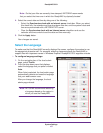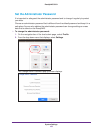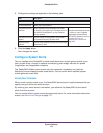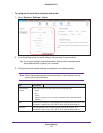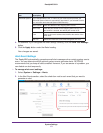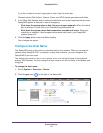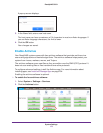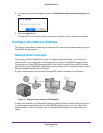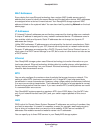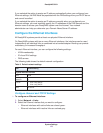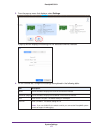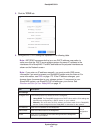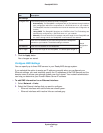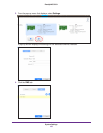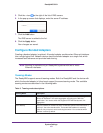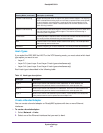
System Settings
175
ReadyNAS OS 6.1
MAC Addresses
Every device that uses Ethernet technology has a unique MAC (media access control)
address that is used to identify the source device and the destination device. MAC addresses
are assigned when a device is manufactured. Your ReadyNAS storage system’s MAC
address is listed on the system’s label. You can also view it by selecting Network on the local
admin page.
IP Addresses
IP (Internet Protocol) addresses are another key component for sharing data over a network.
A unique IP address is assigned to every network-connected device. IP addresses come in
two varieties: static and dynamic. Static IP addresses do not change, but dynamic IP
addresses do change.
Unlike MAC addresses, IP addresses are not assigned by the device’s manufacturer. Static
IP addresses are assigned by your ISP (Internet service provider) or network administrator.
Dynamic IP addresses are assigned by a DHCP (Dynamic Host Control Protocol) server. In
most cases, the DHCP server belongs to an ISP, but a router or other device can also act as
a DHCP server.
Ethernet
Your ReadyNAS storage system uses Ethernet technology to transfer information on your
local area network. Ethernet technology divides data into smaller pieces, called packets or
frames, before transmitting it on your network. Ethernet technology includes methods to
check for data transmission errors.
MTU
You can also configure the maximum size of packets that are sent across a network. This
setting is called MTU (maximum transmission unit). A large MTU can help speed data
transmission in some circumstances. However, using a large packet size becomes inefficient
if an error occurs during transmission. That is because if any part of a large packet is corrupt,
the entire large packet must be resent. If you use a smaller MTU, smaller packets are resent
if a communication error occurs.
Your ReadyNAS system supports a maximum MTU size of 9000 bytes. Use this MTU size
only if your network interface card (NIC) and your switch support packets of this size or
larger.
DNS
DNS is short for Domain Name System. Because IP addresses are a string of numbers, they
are hard to remember. It is easier to remember a name (for example, www.readynas.com)
than a string of numbers when you want to visit a website. A DNS server translates IP
addresses into website names and website names into IP addresses.
You can specify up to three DNS servers in your ReadyNAS storage system.



